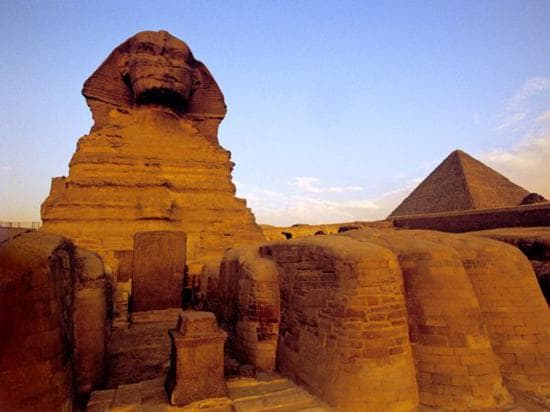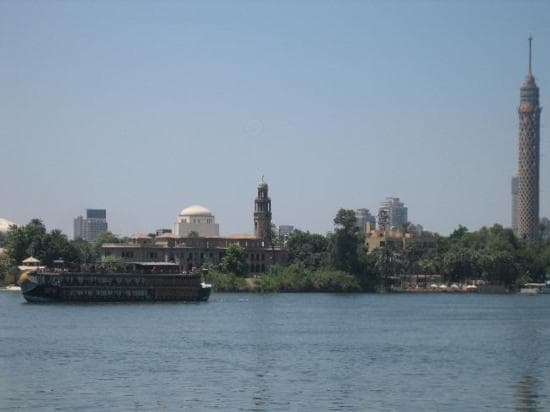A Middle Eastern country in northeast Africa, Egypt is at the center of the Arab world. Egypt controls the Suez Canal, the shortest sea link between the Indian Ocean and the Mediterranean Sea. The country is defined by desert and the Nile, the longest river on Earth. The Nile flows north out of central Africa, cascading over the cataracts (waterfalls) through Upper (southern) Egypt and Lower (northern) Egypt to the Mediterranean Sea—with a mountainous desert to the east, a rolling drier desert to the west, and the vast Sahara to the south.
Ancient civilizations arose along the narrow floodplain of the Nile, protected by the deserts that were natural barriers to invaders. Egyptians take pride in their rich heritage and in their descent from what is considered the first great civilization. Some 4,500 years ago Old Kingdom Egypt possessed enough peace and wealth to cultivate a culture devoted to the afterlife. Some 20,000 to 30,000 people were mobilized to construct the Great Pyramid at Giza for the pharaoh Khufu; at 147 meters (481 feet) high it was the tallest monument in the world for thousands of years—until the 19th century.
Egypt is Africa’s second most populous country after Nigeria, and it has the highest population in the Arab world. About 95 percent of Egyptians live along the Nile—on less than 5 percent of Egypt’s territory. The Nile Valley is one of the world’s most densely populated areas, containing an average of 1,540 persons per square kilometer (3,820 per square mile). Most Egyptians are Muslim Arabs, but there is a sizeable Coptic Christian population of seven million.
The main sources of foreign currency are remittances from workers abroad, Suez Canal fees, tourism, and oil. The Aswan High Dam, completed in 1971, provides hydroelectricity, as well as a controlled water supply for year-round irrigation and desert reclamation. The new Sheikh Zayed Canal diverts water from Lake Nasser to create new farmland. Harnessing the Nile, however, has reduced silt deposits downstream, increasing erosion and soil salinity.
Gamal Abdel Nasser helped end British control in 1953. In 1970 he was succeeded by Anwar Sadat, who liberalized the economy, distanced Egypt from the Soviets, and pursued peace with Israel. Muslim fundamentalists assassinated Sadat in 1981. President Hosni Mubarak reclaimed Egypt’s strength in the Arab world with the return of the Arab League to Cairo. An ally of the West, the government is democratic but authoritarian, seeking to control Islamism and political dissent.

Fast Facts
Population:
74,033,000
Capital:
Cairo; 11,146,000
Area: 1,002,000 square kilometers (386,874 square miles)
Language: Arabic, English, French
Religion: Sunni Muslim, Coptic Christian
Currency: Egyptian pound
Life Expectancy: 68
GDP per Capita: U.S. $4,000
Literacy Percent: 58
ECONOMY
Industry: Textiles, food processing, tourism, chemicals
Agriculture: Cotton, rice, corn, wheat; cattle
Exports: Crude oil and petroleum products, cotton, textiles, metal products, chemicals




Source: The National Geographic
CIA- The World Factbook










